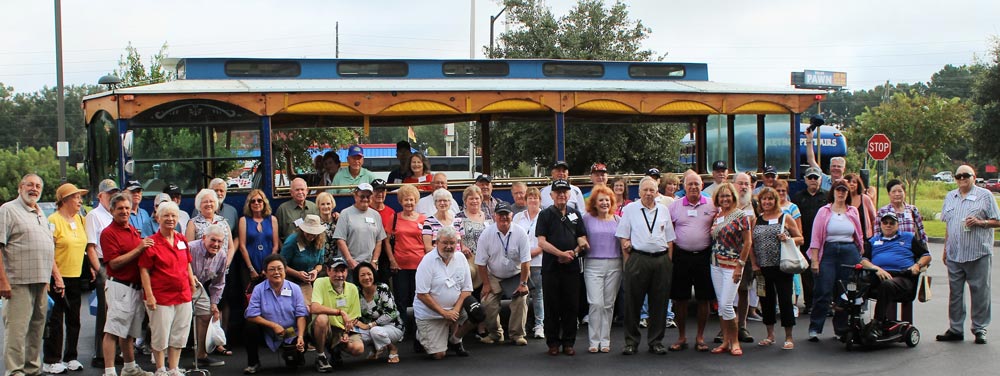by Adam Rose
Time moves quickly and with WWII veterans passing on at 1,100 a day there is a question of how to remember these heroes. Many military reunions turn to younger generations to maintain their legacy. Everyone involved agrees the benefits are mutual.
The USS Minneapolis Association has families with two and three generations attending. Attendee Glenn Stephens said they recently reprinted their “Minnie” photo-history a second time. “Many of the next generation are interested in seeing what Vets did and how they lived. This book tells it in photographs,” Stephens said. He urges groups to include younger generations in their reunions. “We are going much too fast, especially the WWII bunch,” he added.
PT Boats, Inc., a WWII veterans organization for those who served with Patrol Torpedo boats, their shore bases and their mother ships, “tenders.” There isn’t a separate family member group, but anyone who wants to join is welcome and receives equal voting rights. Membership is open to anyone interested in PTs.
When reunions began in 1965, the founder wanted wives to participate and children were soon encouraged to come. They’ve never been a last-man outfit. Today fourth generations attend because of founder J.M. “Boats” Newberry’s foresight. In the late sixties he was determined to gather artifacts and memorabilia to build a museum. He realized to perpetuate the PT story, veterans’ children are needed. The museum became a reality in 1976 and has expanded thanks to the generosity of PT sailors, their wives, offspring, other relatives known as CrewKin, historians and PT buffs.

Children and grandchildren are called Splinters. They follow their fathers’ footprints by putting on regional gatherings known as bull sessions. This year about 80 will attend the national reunion. Splinters spend much of their time at the reunion with their parents, but have a get-acquainted meeting where their sixteen year tradition is explained to newcomers. In 1985 the Splinters decided to buy a nice bottle of champagne to auction during Sunday evening’s event to raise money for the museum. The next year a Splinter made a wooden case to hold two champagne glasses engraved with the city and reunion year from a PT boat they were restoring. The high bidder enjoyed the champagne, kept the glasses as mementos, but returned the box to be auctioned with new bottles and glasses. The Splinter Champagne Case and bottle have raised thousands of dollars over 16 years.
To help the PT story along, PT Boats Inc. has published three books and reprinted another. A 10,000 photo archive along with a library of books about PTs and related WWII subjects is also maintained, along with a semi-annual magazine. All the PT men believe these collections are vital because little-to-nothing is taught in schools about WWII. Because WWII still affects us 60 years later, they believe it’s important to keep the “little wooden boats” story alive.
Alyce Guthrie answered our question about children’s involvement being crucial to PT reunions thriving with a “loud yes.” “How else will we understand why these men went to war?” she asked, and added that it’s important to pass PT traditions to children and build our American heritage for future generations. “If WWII veterans don’t tend to this now, their sacrifices will be gone forever because the men who fought for freedom in the 1940’s are dying. If they die without informing their children, the next generations won’t even get a glimpse of what a world war is about,” she told us.
Some reunions are trying different ideas to encourage younger generations to carry on their traditions. Larry Wilson, USAF Pinetree Line, recently had the first reunion for this distinct group. From the early 1950s to the late 1980s the Pinetree Line was a series of 44 radar stations stretching across Canada from Vancouver Island east to Newfoundland and up the east coast to Baffin Island. Many sites were manned by USAF personnel before being turned over to Canada’s maintenance. All are gone except for three sites on the east coast and one on the west coast, forming the Canadian Coastal Radar System. Technology changed them to unmanned, operated remotely. The reunion plants a tree at each location a post was. The hope is their families will become part of the tradition and continue to plant trees after they are gone.
Many reunions that have not included second generations told us they plan to. If you have advice or stories about integrating younger generations, please share them with us. You’ll help other reunions include their families and pass stories and traditions on to future generations.
The Alliance of Military Reunions is a cooperative networking and support organization of, by and for military and naval reunion groups. Learn more at www.allmilitaryreunions.org.
Other places to post upcoming military reunions
Shared with permission by VMRP (Volunteer Managers/ Reunion Planners)
- American Legion Magazine –http://www.legion.org/reunions
- AMVETS – http://www.amvets.org/reunion-notices/
- Military.com –http://www.military.com/Resources/ReunionList/1,11127,NONE-0,00.html
- SEAWAVESS – http://www.seawaves.com
- The Retired Enlisted Association – http://www.trea.org/
- TIN CAN SAILORS ASSN – http://www.destroyers.org/reunions/reunions.htm
- YMRC (YOUR MILITARY REUNION CONNECTION) –http://www.yourmilitaryreunions.com




